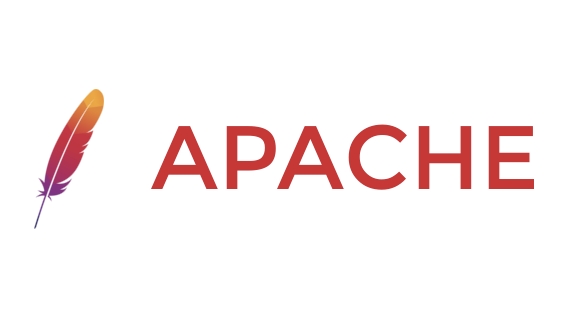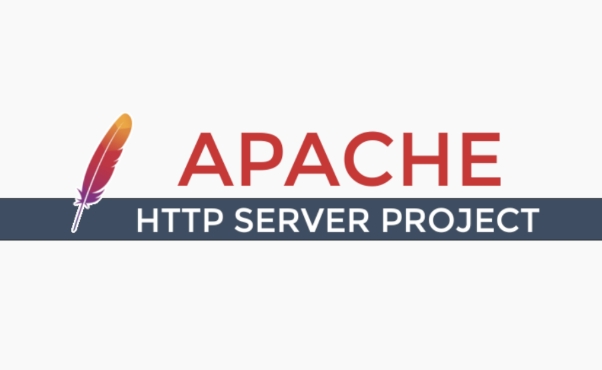Edit the Apache configuration file (e.g., httpd.conf or ports.conf) and change "Listen 80" to "Listen 8080". 2. Update all virtual host directives from :80 to :8080 in respective configuration files. 3. Save the changes and restart Apache using the appropriate command for your system (e.g., sudo systemctl restart apache2). 4. Test by accessing http://localhost:8080 and verify Apache is listening on port 8080 using netstat or ss. Ensure no port conflicts, firewall blocks, or SELinux restrictions exist, and the server should successfully run on port 8080.

Changing the Apache port from 80 to 8080 is a common task, especially when port 80 is already in use (e.g., by another web server or system service). Here's how to do it correctly on most systems (Linux, Windows, macOS):

1. Edit the Apache Configuration File (httpd.conf or apache2.conf)
The main configuration file for Apache varies by system:
-
Linux (Ubuntu/Debian):
/etc/apache2/apache2.confor/etc/apache2/ports.conf -
Linux (CentOS/RHEL):
/etc/httpd/conf/httpd.conf -
Windows:
C:\Program Files\Apache Group\Apache2\conf\httpd.conf(path may vary) -
macOS (with Homebrew):
/usr/local/etc/httpd/httpd.conf
Open the file in a text editor with admin/root privileges:

sudo nano /etc/apache2/apache2.conf
Look for the line that says:
Listen 80
Change it to:

Listen 8080
? If you're using a Debian-based system, also check
/etc/apache2/ports.conf, as that’s where theListendirective is usually defined.
2. Update Virtual Hosts (if configured)
If you have virtual hosts set up (in files like 000-default.conf or httpd-vhosts.conf), you’ll need to update them too.
Look for blocks like:
<VirtualHost *:80>
ServerName localhost
DocumentRoot /var/www/html
</VirtualHost>Change *:80 to *:8080:
<VirtualHost *:8080>
ServerName localhost
DocumentRoot /var/www/html
</VirtualHost>? Check all virtual host files in:
/etc/apache2/sites-available/(Debian/Ubuntu)/etc/httpd/conf.d/or/usr/local/apache2/conf/extra/(others)
3. Save and Restart Apache
After making changes:
On Ubuntu/Debian:
sudo systemctl restart apache2
On CentOS/RHEL:
sudo systemctl restart httpd
On macOS (Homebrew):
brew services restart httpd
On Windows: Restart via Services or the Apache tray control.
4. Test the New Port
Open your browser and go to:
http://localhost:8080
You should see your website or Apache’s default page.
Also verify Apache is listening on 8080:
sudo netstat -tuln | grep :8080
Or:
sudo ss -tuln | grep :8080
Common Issues & Tips
- ? Port permissions: Ports below 1024 (like 80) require root. 8080 doesn’t, so it’s safer for testing.
- ? Port already in use: Run
sudo lsof -i :8080to check for conflicts. - ? Firewall: If accessing remotely, ensure port 8080 is allowed in your firewall.
- ? SELinux (on RHEL/CentOS): May block non-standard ports. Use
setsebool -P httpd_can_network_connect 1if needed.
That’s it. Apache should now run on port 8080 instead of 80. Basically just change Listen 80 → Listen 8080, update virtual hosts, and restart. Not complicated, but easy to miss a config file.
The above is the detailed content of How to change the Apache port from 80 to 8080?. For more information, please follow other related articles on the PHP Chinese website!

Hot AI Tools

Undress AI Tool
Undress images for free

Undresser.AI Undress
AI-powered app for creating realistic nude photos

AI Clothes Remover
Online AI tool for removing clothes from photos.

Clothoff.io
AI clothes remover

Video Face Swap
Swap faces in any video effortlessly with our completely free AI face swap tool!

Hot Article

Hot Tools

Notepad++7.3.1
Easy-to-use and free code editor

SublimeText3 Chinese version
Chinese version, very easy to use

Zend Studio 13.0.1
Powerful PHP integrated development environment

Dreamweaver CS6
Visual web development tools

SublimeText3 Mac version
God-level code editing software (SublimeText3)
 Detailed steps to deploy a Joomla website on PhpStudy
May 16, 2025 pm 08:00 PM
Detailed steps to deploy a Joomla website on PhpStudy
May 16, 2025 pm 08:00 PM
The steps to deploy a Joomla website on PhpStudy include: 1) Configure PhpStudy, ensure that Apache and MySQL services run and check PHP version compatibility; 2) Download and decompress PhpStudy's website from the official Joomla website, and then complete the installation through the browser according to the installation wizard; 3) Make basic configurations, such as setting the website name and adding content.
 How to execute php code after writing php code? Several common ways to execute php code
May 23, 2025 pm 08:33 PM
How to execute php code after writing php code? Several common ways to execute php code
May 23, 2025 pm 08:33 PM
PHP code can be executed in many ways: 1. Use the command line to directly enter the "php file name" to execute the script; 2. Put the file into the document root directory and access it through the browser through the web server; 3. Run it in the IDE and use the built-in debugging tool; 4. Use the online PHP sandbox or code execution platform for testing.
 Troubleshooting of system performance not recovered after uninstalling Apache service
May 16, 2025 pm 10:09 PM
Troubleshooting of system performance not recovered after uninstalling Apache service
May 16, 2025 pm 10:09 PM
Reasons for system performance not recovered after uninstalling the Apache service may include resource occupancy by other services, error messages in log files, resource consumption by abnormal processes, network connection problems, and file system residues. First, check whether there are other services or processes before uninstalling with Apache; second, pay attention to the operating system's log files and find error messages that may occur during the uninstallation process; second, check the system's memory usage and CPU load, and find out abnormal processes; then, use the netstat or ss command to view the network connection status to ensure that no ports are occupied by other services; finally, clean up the remaining configuration files and log files after uninstallation to avoid occupying disk space.
 How to update Debian Tomcat
May 28, 2025 pm 04:54 PM
How to update Debian Tomcat
May 28, 2025 pm 04:54 PM
Updating the Tomcat version in the Debian system generally includes the following process: Before performing the update operation, be sure to do a complete backup of the existing Tomcat environment. This covers the /opt/tomcat folder and its related configuration documents, such as server.xml, context.xml, and web.xml. The backup task can be completed through the following command: sudocp-r/opt/tomcat/opt/tomcat_backup Get the new version Tomcat Go to ApacheTomcat's official website to download the latest version. According to your Debian system
 Commands and configurations for starting Apache service in macOS system
May 16, 2025 pm 10:00 PM
Commands and configurations for starting Apache service in macOS system
May 16, 2025 pm 10:00 PM
The command to start the Apache service on macOS is sudoapachectlstart, and the configuration file is located in /etc/apache2/. The main steps include: 1. Edit the httpd.conf file, modify the Listen port such as Listen8080; 2. Adjust the DocumentRoot path to the personal directory such as /Users/your_username/Sites, and update the corresponding permission settings; 3. Use the sudoapachectlgraceful command to restart Apache to ensure that the configuration takes effect; 4. Enable the mod_deflate module to compress data to improve page loading speed.
 Solve the problem of file deletion failure during uninstalling Apache
May 16, 2025 pm 10:06 PM
Solve the problem of file deletion failure during uninstalling Apache
May 16, 2025 pm 10:06 PM
The reasons for file deletion failure during Apache uninstall include file permission issues, locking files, and running processes. Solutions include: 1. Stop the Apache service: sudosystemctlstoppapache2; 2. Manually delete the Apache directory: sudorm-rf/etc/apache2/usr/sbin/apache2; 3. Use lsof to find and terminate the process of locking the file: sudolsof|grepapache2, and then sudokill-9; 4. Try to delete the file again.
 Detailed configuration steps for Apache connecting to MySQL database
May 16, 2025 pm 10:12 PM
Detailed configuration steps for Apache connecting to MySQL database
May 16, 2025 pm 10:12 PM
Configuring Apache to connect to MySQL database requires the following steps: 1. Make sure that Apache and MySQL are installed; 2. Configuring Apache to support PHP, by adding LoadModule and AddHandler instructions in httpd.conf or apache2.conf; 3. Configuring PHP to connect to MySQL, enable mysqli extension in php.ini; 4. Create and test the connected PHP file. Through these steps, the connection between Apache and MySQL can be successfully implemented.
 What are the Debian Hadoop monitoring tools?
May 23, 2025 pm 09:57 PM
What are the Debian Hadoop monitoring tools?
May 23, 2025 pm 09:57 PM
There are many methods and tools for monitoring Hadoop clusters on Debian systems. The following are some commonly used monitoring tools and their usage methods: Hadoop's own monitoring tool HadoopAdminUI: Access the HadoopAdminUI interface through a browser to intuitively understand the cluster status and resource utilization. HadoopResourceManager: Access the ResourceManager WebUI (usually http://ResourceManager-IP:8088) to monitor cluster resource usage and job status. Hadoop






